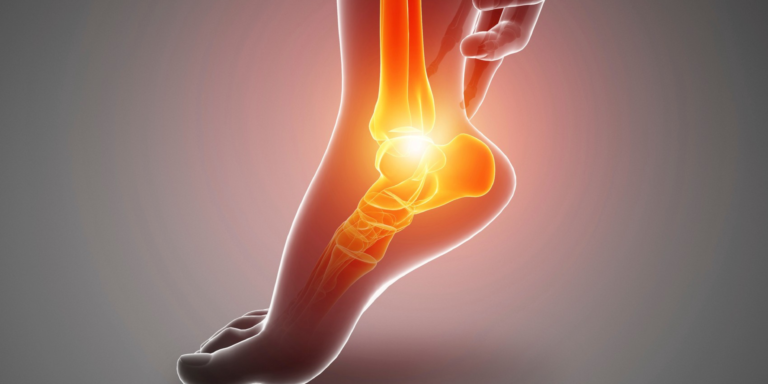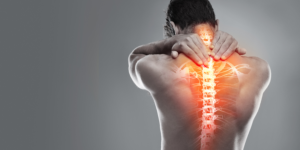
Best Home Exercises to Support Your Physio Progress
Best Home Exercises to Support Your Physio Progress When you walk out of a physiotherapy session, the real work isn’t over—it’s just beginning. Continuing your

If you’ve ever felt sharp heel pain with your first morning steps, you’re not alone. Plantar fasciitis—inflammation of the thick band of tissue running across the bottom of your foot—is one of the most common causes of chronic heel pain.
While many patients are offered steroid injections for quick relief, these shots come with potential side effects, including tissue weakening and recurring pain. The good news? There are effective, science-backed ways to treat plantar fasciitis without steroid injections, focusing on long-term healing instead of temporary fixes.
The plantar fascia is a strong ligament-like tissue that supports your foot’s arch and absorbs shock as you walk or run. When it becomes overstressed—from overuse, poor footwear, or biomechanical imbalances—it can lead to small tears and inflammation.
Common symptoms include:
Sharp heel pain upon waking or standing
Tenderness along the arch or heel
Increased pain after long periods of rest or activity
Left untreated, plantar fasciitis can become chronic, interfering with your mobility and quality of life.
Steroid injections can provide short-term relief by reducing inflammation, but they often come at a cost. Research shows that repeated injections may:
Weaken the plantar fascia tissue
Increase the risk of rupture
Cause fat pad atrophy (thinning of heel cushioning)
Offer only temporary pain suppression
Moreover, injections don’t address the root cause of the issue—such as muscle tightness, poor biomechanics, or footwear choices. That’s why many healthcare professionals now emphasize natural, rehabilitative treatments instead.
Physiotherapy remains one of the most effective approaches for treating plantar fasciitis naturally. A physiotherapist tailors exercises to stretch and strengthen the affected area, reducing tension on the fascia.
Common physiotherapy techniques include:
Manual therapy: Gentle mobilization to improve foot and ankle movement.
Soft tissue massage: Breaks down scar tissue and enhances blood flow.
Stretching routines: Focus on the calf muscles and plantar fascia itself.
Strengthening exercises: Builds stability in the foot and lower leg.
Taping or orthotics: Provides temporary support and reduces strain during recovery.
This active, patient-focused approach addresses not only the pain but also the biomechanical causes behind it.
Consistency is key. Incorporating specific exercises into your daily routine helps the fascia heal naturally:
Stand facing a wall, one leg forward and one back.
Keep the back heel flat and lean forward.
Hold for 20–30 seconds.
Repeat 3 times per leg.
Sit down and cross one foot over the opposite knee.
Pull your toes gently toward your shin until you feel a stretch in the arch.
Hold for 15–20 seconds.
Repeat several times daily.
Place a towel on the floor and scrunch it toward you using your toes.
This strengthens the small muscles of your feet that support the arch.
Roll your foot over a tennis ball, frozen water bottle, or massage roller for 2–3 minutes.
Helps release tightness and improve blood flow.
These simple exercises promote flexibility, reduce tension, and support healing without aggressive interventions.
One of the most overlooked contributors to plantar fasciitis is improper footwear. Shoes that lack arch support or cushioning can strain the fascia with every step.
Tips for choosing footwear:
Opt for shoes with good arch and heel support.
Avoid walking barefoot on hard surfaces.
Replace worn-out shoes regularly.
Consider custom orthotic inserts for added support.
A physiotherapist or podiatrist can assess your gait and recommend personalized orthotic solutions to correct imbalances and improve comfort.
Several non-invasive therapies can further reduce pain and inflammation without resorting to steroids:
| Treatment | Benefits |
|---|---|
| Shockwave Therapy | Stimulates tissue repair and increases blood flow |
| Dry Needling | Targets trigger points in calf and foot muscles |
| Laser Therapy | Reduces inflammation and accelerates tissue healing |
| Icing and Contrast Baths | Controls swelling and improves circulation |
When used under professional guidance, these treatments enhance recovery and reduce recurrence.
Once you’ve overcome plantar fasciitis, prevention becomes the next goal. Follow these steps to keep your feet pain-free:
Warm up before exercise or long walks.
Maintain calf and foot flexibility.
Alternate between sitting and standing during long work hours.
Replace athletic shoes every 6–12 months.
Keep a healthy weight to reduce pressure on your feet.
Prevention is about balance—combining strength, flexibility, and proper support to protect your plantar fascia in daily life.
Treating plantar fasciitis without steroid injections isn’t just possible—it’s often more effective in the long run. By combining physiotherapy, home exercises, proper footwear, and non-invasive treatments, patients can achieve lasting relief without the risks associated with steroids.
The key is patience and consistency. Healing takes time, but with the right guidance, your feet can return to full strength and comfort—naturally and safely.
Can plantar fasciitis heal on its own?
Yes, mild cases can improve with rest, stretching, and supportive footwear. Chronic cases benefit from physiotherapy and structured rehab.
How long does it take to recover?
Most patients see significant improvement within 6–12 weeks with consistent treatment.
Are steroid injections ever necessary?
They’re usually reserved for severe pain when other conservative treatments haven’t worked—but should be approached with caution.
Can I walk or exercise with plantar fasciitis?
Yes, but avoid high-impact activities until pain improves. Low-impact options like swimming or cycling are better.
Does massage help plantar fasciitis?
Absolutely. Regular soft tissue massage improves blood flow, breaks up tension, and reduces inflammation.

Best Home Exercises to Support Your Physio Progress When you walk out of a physiotherapy session, the real work isn’t over—it’s just beginning. Continuing your

The Science Behind Osteopathy: A Deep Dive for Patients Osteopathy often sparks curiosity among those searching for safe and effective pain relief methods. While its

Chronic Back Pain: Why Massage Alone Isn’t Enough Back pain is one of the most common modern ailments—affecting nearly everyone at some point in life.